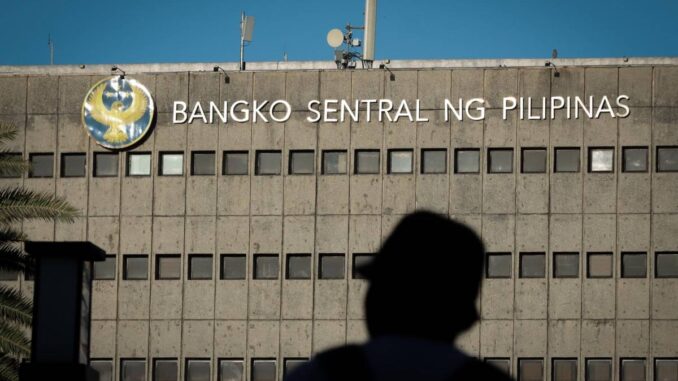
THE Bangko Sentral ng Pilipinas (BSP) is likely to closely follow the US Federal Reserve’s actions to maintain a healthy interest rate differential, Moody’s Analytics said, with another rate cut anticipated in the fourth quarter.
“As the US Federal Reserve begins its monetary policy easing cycle, BSP will certainly keep an eye on the magnitude of those rate cuts,” Moody’s Analytics economist Sarah Tan told The Manila Times.
“We expect the BSP to follow the Fed’s path rather closely. Doing so will help to maintain interest rate spreads, thus stabilizing the peso versus the dollar,” Tan added.
Fed chairman Jerome Powell has given out signals that the US central bank could start cutting rates this month, adding that the timing and pace of rate cuts will depend on incoming data, the evolving outlook, and the balance of risks.
Most economists are forecasting a 50-basis-point rate cut by the Fed this year, which could lead to a weaker dollar.
As the rate cut is expected, Tan said that the Philippine central bank will likely deliver another rate cut in the fourth quarter.
The central bank policymaking body Monetary Board slashed last August 15 the key policy rate by 25 bps, bringing down the rates to 6.25 percent from a 17-year high of 6.5 percent.
BSP Governor Eli Remolona Jr. already indicated that they still have room for another rate cut this year, potentially in the fourth quarter.
The Monetary Board has only two meetings remaining this year scheduled for October 17 and December 19.
Tan said that easing the monetary policy will significantly support the domestic economy, as lower rates will increase spending by easing household budgets and boost private investment by reducing borrowing costs.
The BSP has adopted a highly vigilant approach to monetary measures ever since it adopted inflation targeting in 2002.
Surging inflation in the wake of Russia’s invasion of Ukraine prompted the Monetary Board to embark on a tightening spree, totaling 450 basis points (bps) since May last year.
Tan noted that although cutting rates could increase demand-side inflation, inflation expectations are under control.
Despite July’s inflation exceeding the upper limit of the BSP’s target range for the first time since November at 4.4 percent, she asserted that inflation will return to the 2- to 4-percent target range of the government.
“Besides having its eye on the Fed, the BSP should monitor the country’s domestic conditions closely,” Tan argued, stressing that it is crucial as private consumption is the largest contributor to the country’s gross domestic product (GDP).
“If the domestic economy is flagging due to the prolonged high interest rates, it could warrant an outpacing of the Fed’s easing cycle while ensuring that the peso doesn’t weaken significantly,” she added.
The country’s GDP growth came in better than expected in the second quarter at 6.3 percent, markedly higher than the 4.3 percent recorded in the same period last year.
Socioeconomic Planning Secretary Arsenio Balisacan previously stated that the country’s economy needs to expand by at least 6.0 percent in the last two quarters to attain the 6- to 7-percent growth target this year.


Be the first to comment